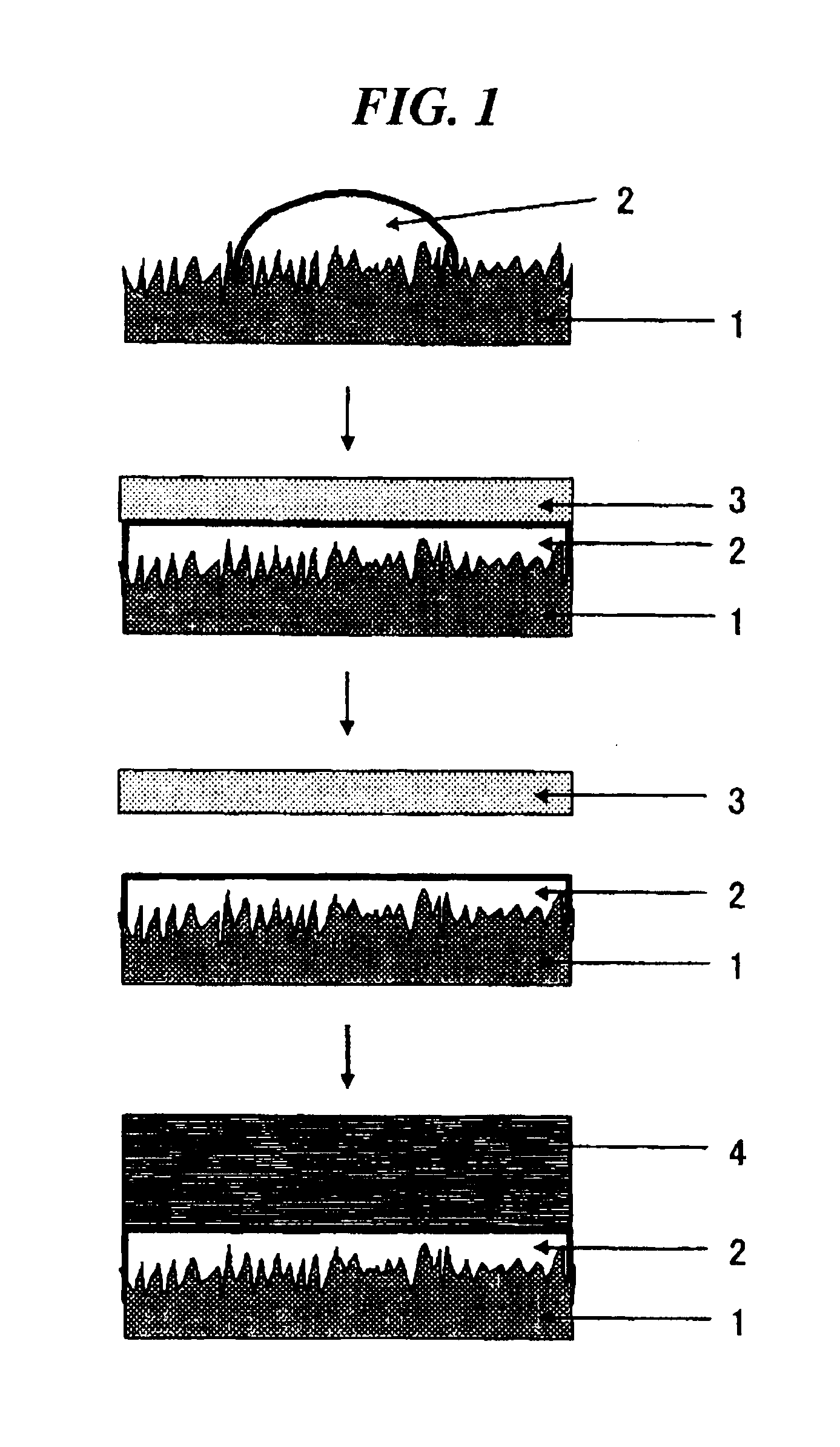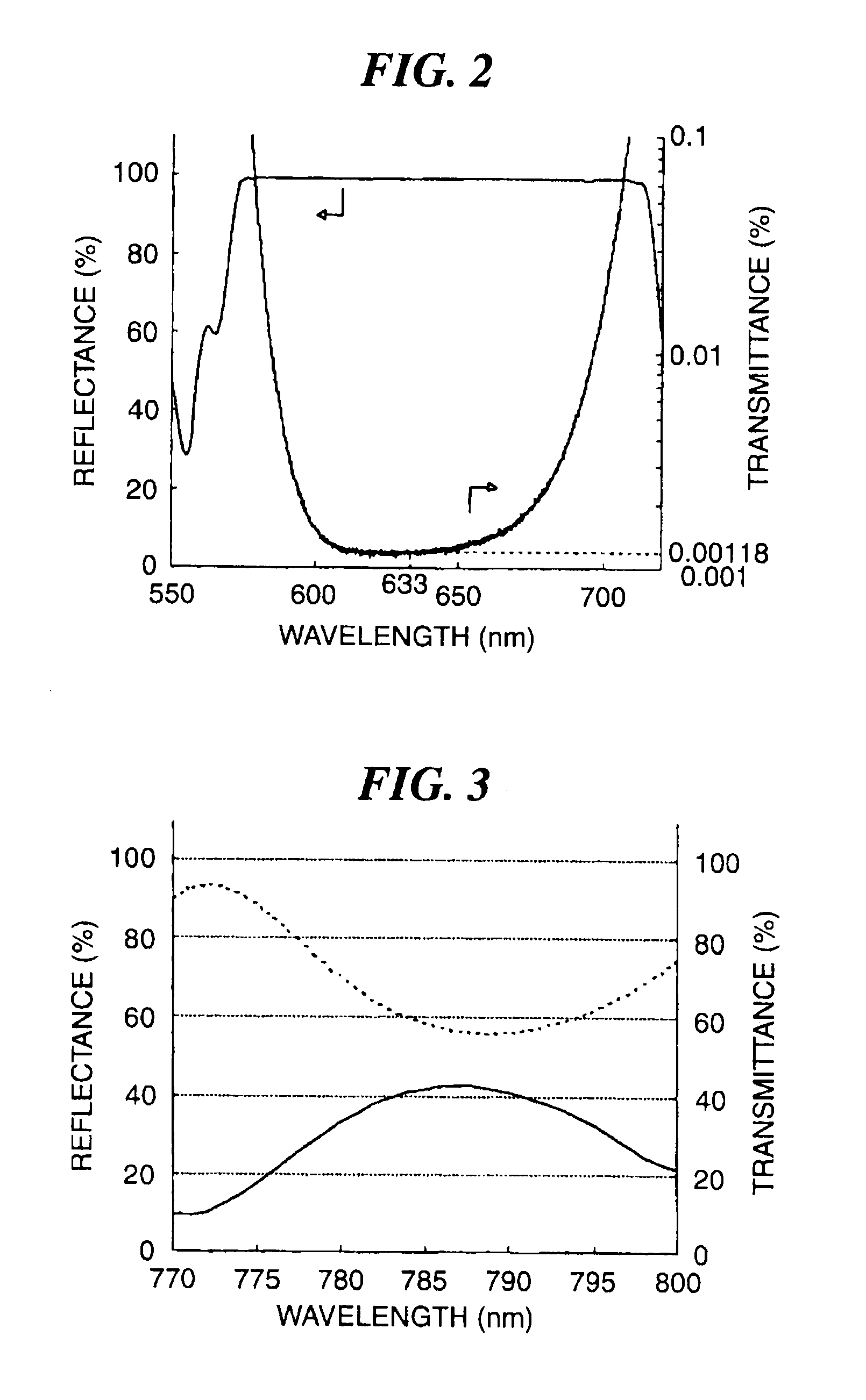Optical component using composite substrate and process for producing same
a technology of composite substrates and optical components, applied in the field of process for producing optical components, can solve the problems of high cost burden, high cost, and high cost burden of substrate polishing, and achieve the effect of reducing the cost burden
- Summary
- Abstract
- Description
- Claims
- Application Information
AI Technical Summary
Benefits of technology
Problems solved by technology
Method used
Image
Examples
embodiment 1
[0038]As shown in FIG. 1, an appropriate amount of an acrylic liquid photo-curable resin composition 2 (from Toyo Gosei Co., Ltd., PAK-01) was placed on an optical substrate 1 formed of borosilicate glass (trade name: BK7, surface roughness RMS=1.22 nm), and a printing pressure was applied to the resin composition 2 by using an extra-flat pressing plate 3 formed of silicon (surface roughness RMS=0.12 nm). Thereafter, light of 365 nm was applied from the optical substrate 1 side to cause a curing reaction, and the extra-flat pressing plate 3 was demolded to form a resin flat surface of the resin composition 2. The surface roughness RMS on the resin flat surface at that time is 0.21 nm, and an extra-flat composite substrate is obtained.
embodiment 2
[0039]The extra-flat composite substrate obtained in Embodiment 1 is used, and oxide silicon and tantalum oxide each having a ¼ wavelength thickness were alternately stacked by an ion beam sputtering apparatus (from Veeco Instruments Inc.) to stack a dielectric multilayered optical thin film 4 having 41 layers, and, thus, to produce a highly reflection mirror for 633 nm. Consequently, the surface roughness RMS is 0.16 nm, and the results of the reflective spectrum characteristics of FIG. 2 show that the reflectance at the wavelength of 633 nm is a level extremely close to 100%. The transmittance at this time is 0.001% level, and thus it is confirmed that the transmittance is low.
embodiment 3
[0042]The composite substrate obtained in Embodiment 1 was used, and a beam splitter was produced by a similar method to Embodiment 2. Consequently, as shown in FIG. 3, when the wavelength is 787 nm, the transmittance is 57%, and the reflectance is 43%. Thus it is confirmed that the beam splitter has characteristics of a small loss.
PUM
| Property | Measurement | Unit |
|---|---|---|
| roughness | aaaaa | aaaaa |
| reflectance | aaaaa | aaaaa |
| surface roughness RMS | aaaaa | aaaaa |
Abstract
Description
Claims
Application Information
 Login to View More
Login to View More - R&D
- Intellectual Property
- Life Sciences
- Materials
- Tech Scout
- Unparalleled Data Quality
- Higher Quality Content
- 60% Fewer Hallucinations
Browse by: Latest US Patents, China's latest patents, Technical Efficacy Thesaurus, Application Domain, Technology Topic, Popular Technical Reports.
© 2025 PatSnap. All rights reserved.Legal|Privacy policy|Modern Slavery Act Transparency Statement|Sitemap|About US| Contact US: help@patsnap.com



